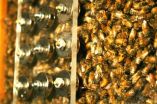Many brain tumor patients use homeopathy, alternative treatments
2010-12-14
(Press-News.org) ST. PAUL, Minn. – Many people with incurable brain tumors use alternative therapies, such as taking vitamins and homeopathy, in addition to their conventional treatments, according to a study published in the December 14, 2010, print issue of Neurology®, the medical journal of the American Academy of Neurology.
About 40 percent of brain tumor patients in the study used alternative therapies including homeopathic remedies, vitamin supplements and psychological therapy.
"The use of these alternative treatments may be largely overlooked and underestimated," said study author Oliver Heese, MD, and neurosurgeon with the University Medical Center Hamburg-Eppendorf in Germany. "Doctors need to be aware of patients' desire to seek alternative treatments and encourage an open discussion of options. Their guidance may be much appreciated, especially when some treatments are dubious, expensive or potentially harmful."
The study involved 621 people with incurable grade II to grade IV gliomas who completed questionnaires about their use of alternative therapies. Alternative therapy was defined as methods or compounds not used in routine clinical practice and not scientifically evaluated.
Younger people, women, and those with more education were more likely to use alternative treatments than older people, men and those with less education.
"The majority of people are turning to alternative treatments not because they are dissatisfied with their conventional care, but because they wish to add something beneficial to their care," Heese said.
From a list of reasons for using alternative treatments, the most commonly chosen responses were "to support conventional therapy," "to build up body resistance" and "to do something for the treatment by myself." The least commonly chosen responses were "because I am afraid of the conventional methods" and "because the physicians don't have enough time."
Of those who used alternative treatments, 39 percent used homeopathy, 31 percent used vitamin supplements and 29 percent used various psychological methods.
###
The study was conducted by the German Glioma Network, supported by the German Cancer Aid.
The American Academy of Neurology, an association of more than 22,000 neurologists and neuroscience professionals, is dedicated to promoting the highest quality patient-centered neurologic care. A neurologist is a doctor with specialized training in diagnosing, treating and managing disorders of the brain and nervous system such as epilepsy, dystonia, migraine, Huntington's disease, and dementia.
For more information about the American Academy of Neurology, visit http://www.aan.com.
VIDEO:
http://www.youtube.com/AANChannel
TEXT:
http://www.aan.com/press
TWEETS:
http://www.twitter.com/AANPublic
END
ELSE PRESS RELEASES FROM THIS DATE:
2010-12-14
Folic acid can reduce birth defects including neural tube defects, congenital heart disease and oral clefts but some speculate high intakes of folic acid may be associated with adverse events such as colorectal cancer, states an article in CMAJ (Canadian Medical Association Journal) (pre-embargo link only) http://www.cmaj.ca/embargo/cmaj100568.pdf.
This study, conducted by researchers at Children's Hospital of Eastern Ontario Research Institute and The Hospital for Sick Children, is the first of its kind in more than three decades, to examine the folate status of Canadians ...
2010-12-14
Disease-management programs, which may include patient education, psychological intervention, dietary education, self-monitoring and telemedicine, can improve diabetes care, states an article in CMAJ (Canadian Medical Association Journal) (pre-embargo link only) http://www.cmaj.ca/embargo/cmaj091786.pdf.
The study, by French researchers, included 41 randomized controlled trials published between 1990 and 2009 with a total of 7013 patients.
The findings showed that disease-management programs are more effective than usual care in reducing glycated hemoglobin levels ...
2010-12-14
VIDEO:
This movie spotlights one waggle dance by a forager that had been sleep-deprived the
previous night. The average dance angle of this dance is superimposed over the dancer and variance around...
Click here for more information.
AUSTIN, Texas—In the busy world of a honey bee hive, worker bees need their rest in order to best communicate the location of food to their hive mates, research from The University of Texas at Austin shows.
"When deprived of sleep, humans ...
2010-12-14
SAN ANTONIO, Texas, U.S.A. (Dec. 13, 2010) — Scientists at the UT Health Science Center San Antonio restored learning and memory in an Alzheimer's disease mouse model by increasing a protein called CBP. Salvatore Oddo, Ph.D., of the university's Department of Physiology and Barshop Institute for Longevity and Aging Studies, said this is the first proof that boosting CBP, which triggers the production of other proteins essential to creating memories, can reverse Alzheimer's effects.
The finding, reported this week in Proceedings of the National Academy of Sciences, provides ...
2010-12-14
Boston, Mass. – It's widely recognized that fragmentation of medical information is a problem in health care, but the extent of the problem and how many patients may be at risk haven't been well quantified. In a new retrospective study, researchers at Children's Hospital Boston looked at adult acute care in Massachusetts and found that of 3.6 million adults visiting an acute care site during a five-year period, almost a third sought care at two or more different hospitals. These patients accounted for more than half of all acute care visits in the state, as well as more ...
2010-12-14
The number of people with asthma has increased sharply over the past few decades. It has been suggested that this is a result of decreased childhood exposure to microorganisms. A team of researchers — led by Dale Umetsu, at Harvard Medical School, Boston; Michio Shimamura, at the University of Tsukuba, Japan; and Petr Illarionov, at the University of Birmingham, United Kingdom — has now provided concrete evidence in mice to support this idea and identified an underlying mechanism to explain this protection, which the team hope could be exploited to develop ways to prevent ...
2010-12-14
Chronic myeloid leukemia (CML) was transformed from a fatal disease to a chronic condition by the development of a drug known as imatinib, which targets the protein that drives this disease (BCR-ABL). However, imatinib does not cure patients, they must take the drug lifelong, as disease recurs if they stop taking it. This is because imatinib does not kill all the CML cells; some, which are known as CML stem cells, persist. A key to therapeutically targeting CML stem cells is knowing whether they rely on BCR-ABL to persist. Answers to this will determine whether more effective ...
2010-12-14
EDITOR'S PICK: A benefit of 'flu: protection from asthma?
The number of people with asthma has increased sharply over the past few decades. It has been suggested that this is a result of decreased childhood exposure to microorganisms. A team of researchers — led by Dale Umetsu, at Harvard Medical School, Boston; Michio Shimamura, at the University of Tsukuba, Japan; and Petr Illarionov, at the University of Birmingham, United Kingdom — has now provided concrete evidence in mice to support this idea and identified an underlying mechanism to explain this protection, which ...
2010-12-14
DURHAM, N.C. – Imposing higher taxes on sodas and other sweetened drinks may generate a lot of money – but would lead to only minimal weight loss among most people and would have no effect on weight among consumers in the highest and lowest income groups, according to new research from Duke-National University of Singapore (NUS) Graduate Medical School.
The study, led by Eric Finkelstein, PhD, associate professor of health services at Duke-NUS, looked at the differential impact on calories and weight of a 20 percent and 40 percent tax on sodas and other sweetened beverages ...
2010-12-14
UPTON, NY - One big challenge in converting plants to biofuels is that the very same molecules that keep plants standing up make it hard to break them down. Now scientists at the U.S. Department of Energy's (DOE) Brookhaven National Laboratory are unraveling details of how plant cells' structural supports - their cell walls - are made, with the hope of finding ways to change their composition for more efficient biofuel production.
In a paper to be published the week of December 13, 2010, in the Proceedings of the National Academy of Sciences, the researchers describe ...
LAST 30 PRESS RELEASES:
[Press-News.org] Many brain tumor patients use homeopathy, alternative treatments

